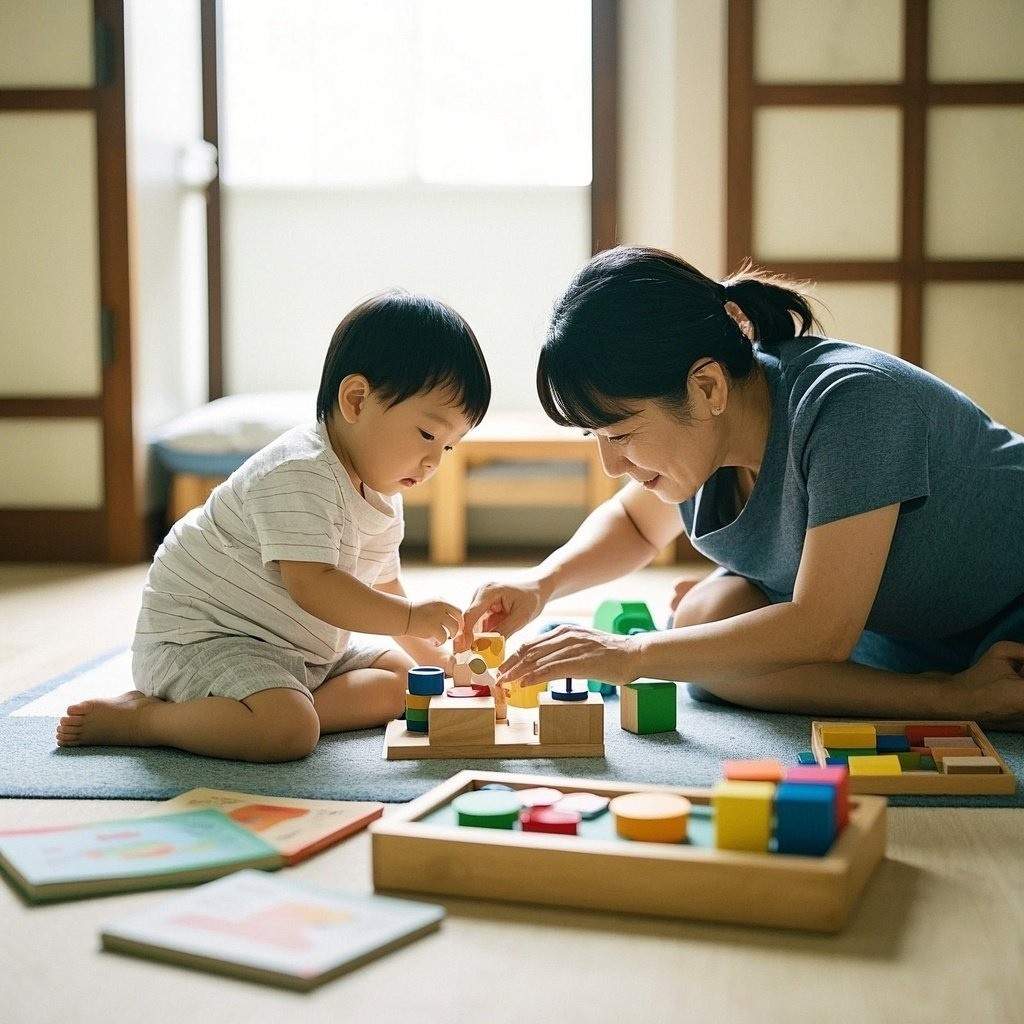In today’s rapidly evolving world, introducing young children to STEM—science, technology, engineering, and math—has never been more important. The good news? STEM for preschoolers doesn’t require advanced equipment or complex instructions. With the right approach, you can turn everyday moments into exciting opportunities for discovery.
STEM projects for preschoolers provide the perfect blend of fun, education, and creativity. Through hands-on learning, children not only engage their senses but also develop foundational skills that promote curiosity, critical thinking, and problem-solving.
In this step-by-step guide, we’ll explore engaging STEM projects designed specifically for preschoolers. These activities are simple to set up, use everyday materials, and most importantly, bring learning to life in joyful ways.
Why STEM in Preschool Matters
STEM learning isn’t just for older students—it’s essential in early childhood, too. At this stage, children are naturally curious. They ask “why,” “what if,” and “how” with enthusiasm. Early childhood STEM activities harness that curiosity and help kids make sense of the world around them.
Key Benefits of STEM in Preschool:
- Boosts cognitive development: Problem-solving tasks improve memory and logic.
- Encourages creativity: Children explore multiple ways to approach a problem.
- Enhances motor skills: Building and experimenting involve fine motor coordination.
- Develops communication skills: Children learn to express ideas, ask questions, and explain outcomes.
- Promotes a growth mindset: Kids learn that mistakes are part of the learning process.
By integrating STEM into everyday play, you’re helping to lay a strong educational foundation—one that supports academic success and lifelong learning.
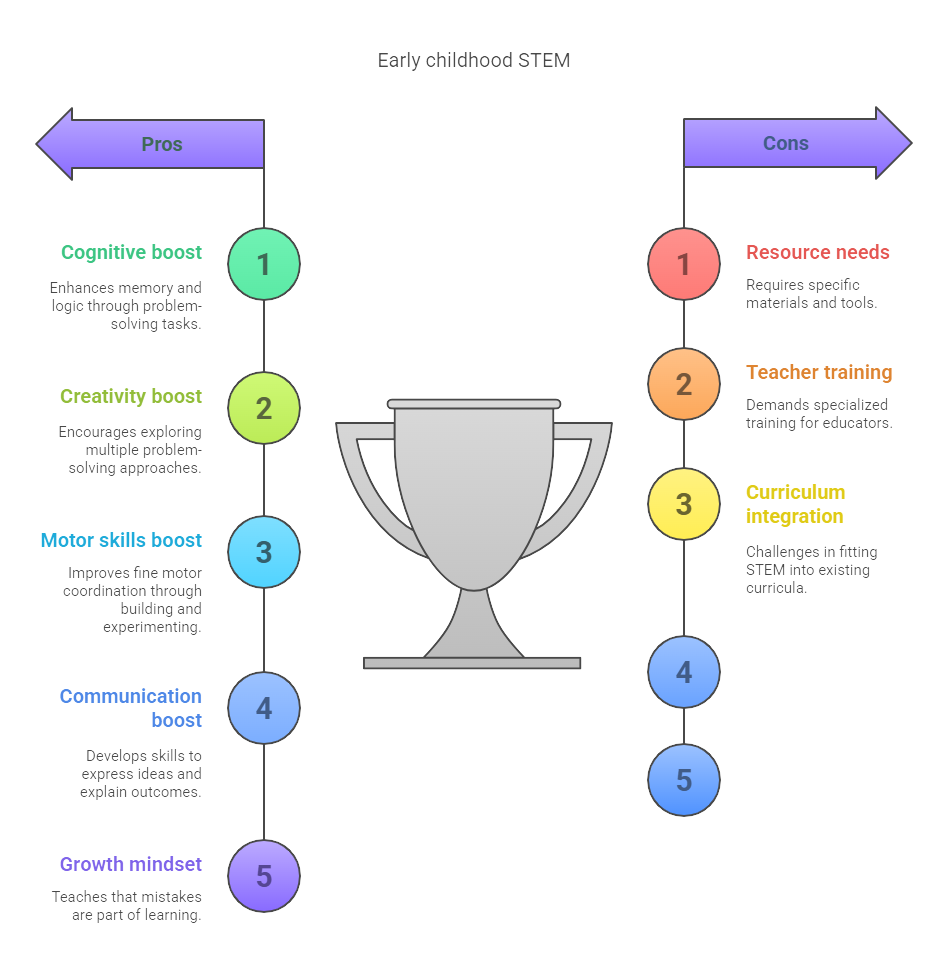
Tips for Doing STEM Projects with Preschoolers
Before diving into specific activities, here are a few practical tips to make the most of your STEM projects for preschoolers:
- Use age-appropriate materials: Keep items safe and manageable for small hands.
- Focus on the process: It’s not about the perfect result—it’s about exploration and learning.
- Let kids lead: Encourage open-ended questions and child-led discovery.
- Keep instructions simple: Use visuals or demonstrations when possible.
- Expect mess and embrace it: Messy play often equals deep engagement.
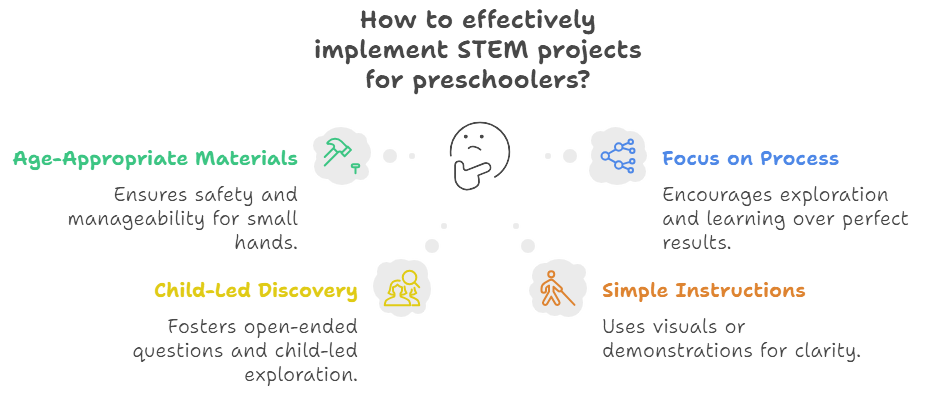
Step-by-Step STEM Projects for Preschoolers
Each project below includes a clear objective, a materials list, and step-by-step instructions to guide your hands-on learning experience.
1. Build a Marshmallow Tower
Category: Engineering
Objective: Introduce basic concepts of structure and stability.
Materials:
- Mini marshmallows (or soft modeling dough)
- Toothpicks
Steps:
- Show your child how to connect marshmallows using toothpicks.
- Encourage them to build different shapes—triangles, squares, cubes.
- See how tall or wide they can make their tower before it topples.
Why It Works:
This activity is an excellent introduction to engineering for preschoolers, encouraging spatial awareness, problem-solving, and fine motor skills.
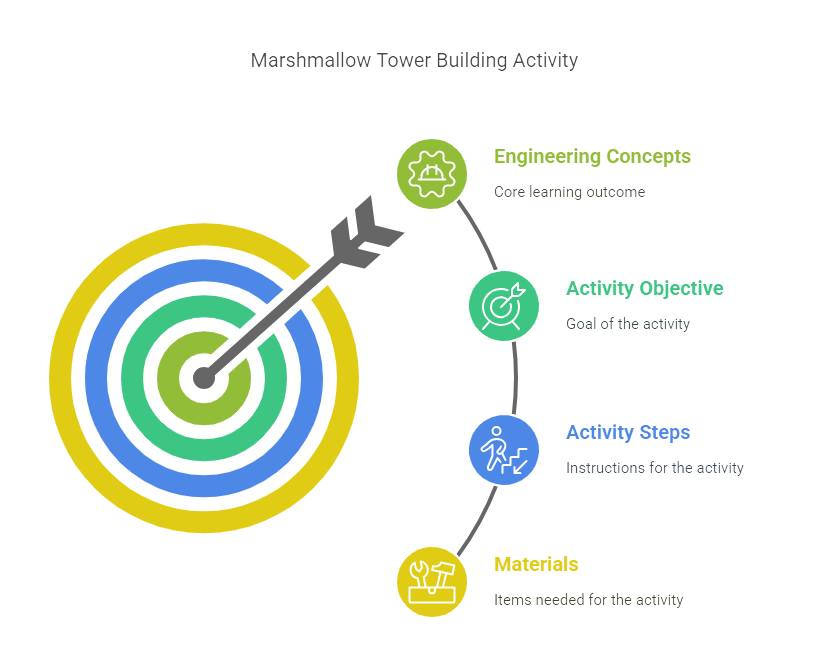
2. Color Mixing Rainbows
Category: Science
Objective: Teach color theory and absorption.
Materials:
- 6 clear cups
- Paper towels
- Red, yellow, and blue food coloring
- Water
Steps:
- Fill three cups with colored water: one red, one yellow, one blue.
- Leave alternating cups empty.
- Place paper towels between each cup so they dip into both the colored and empty cups.
- Watch over time as the colors “walk” and mix to form new colors.
Why It Works:
This science experiment for kids explores color theory, capillary action, and absorption—all in a visually magical way.
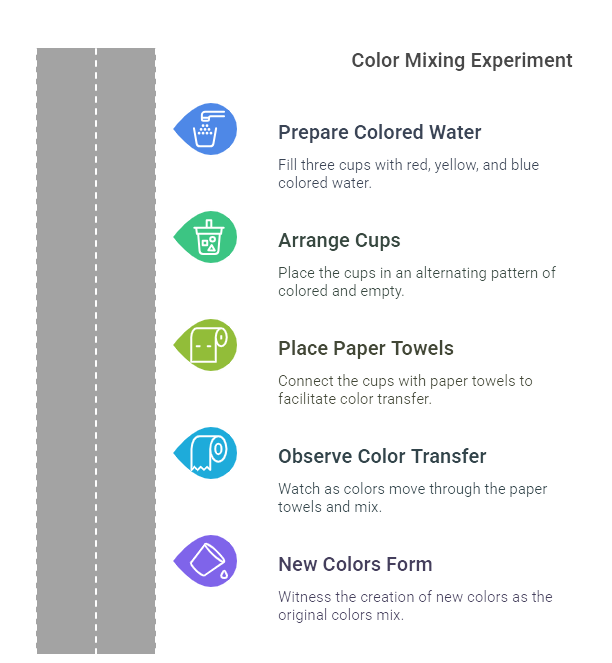
3. Nature Pattern Hunt
Category: Math
Objective: Develop pattern recognition and counting.
Materials:
- Basket or bag
- Simple pattern checklist (e.g., 3 leaves, 2 rocks, 4 sticks)
Steps:
- Go on a walk in your backyard or local park.
- Collect natural items in the quantities shown on the checklist.
- When back home, sort and arrange them into patterns (e.g., leaf-rock-leaf-rock).
Why It Works:
This math-based activity teaches classification, counting, and pattern recognition, making early childhood STEM activities fun and interactive.

4. Straw Rocket Launchers
Category: Technology/Engineering
Objective: Introduce simple design and motion concepts.
Materials:
- Paper
- Tape
- Scissors
- Straw
Steps:
- Roll a strip of paper around the straw and tape it (don’t tape it to the straw!).
- Seal one end to create the “nose” of the rocket.
- Decorate the rocket.
- Blow into the straw and watch the rocket fly.
Why It Works:
This activity combines technology and engineering for preschoolers, showing how design affects motion and distance.
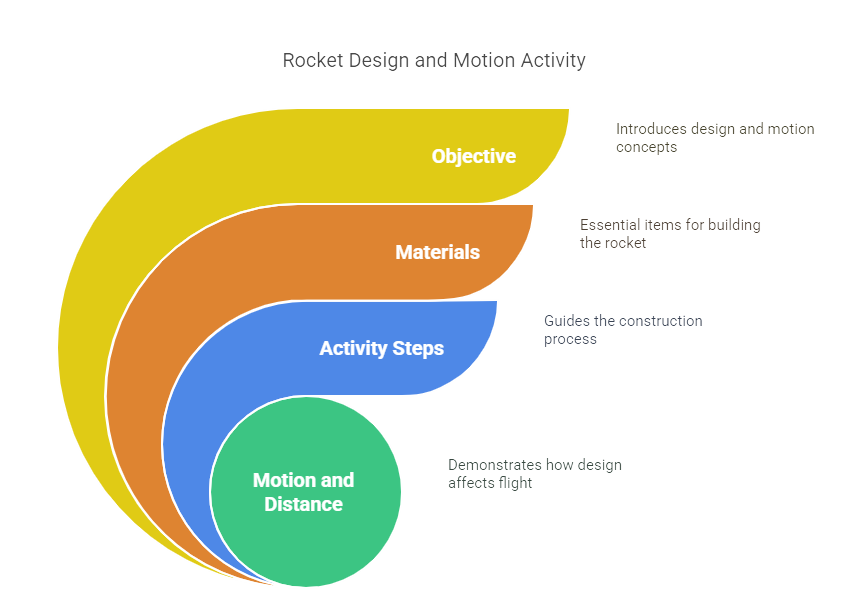
5. Ice Excavation Dig
Category: Science
Objective: Explore states of matter and melting.
Materials:
- Small toys (plastic animals, beads, etc.)
- Water
- Freezer
- Salt
- Droppers or squeeze bottles
Steps:
- Place small toys into a container and fill it with water.
- Freeze overnight.
- Let kids excavate the toys using salt and warm water with droppers.
Why It Works:
This science experiment for kids introduces the concept of melting, temperature, and transformation through tactile exploration.
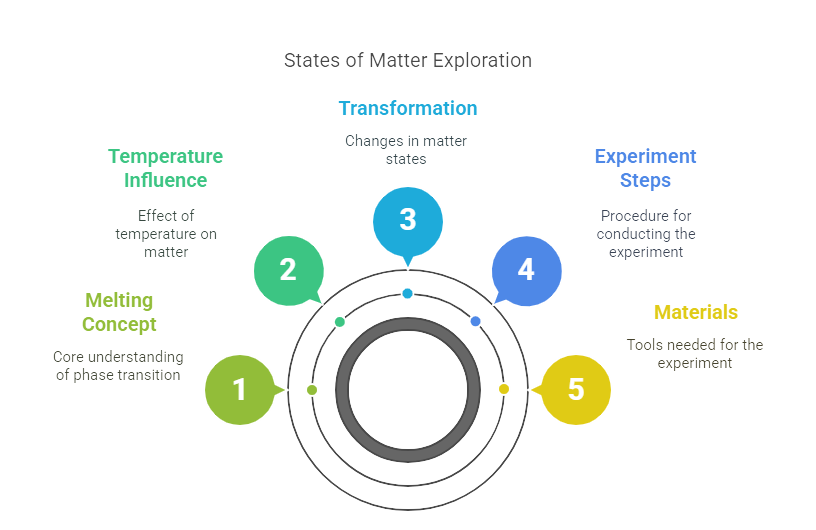
How to Extend the Learning
The best STEM learning doesn’t end when the project is over. Extend the experience with these ideas:
- Ask reflection questions: “What did you notice?” “What surprised you?” “What would you change next time?”
- Draw or journal the results: Encourage your preschooler to draw what happened.
- Read a related book: Connect stories with STEM concepts (e.g., Rosie Revere, Engineer for building challenges).
- Repeat with a twist: Try variations—use different materials or change conditions to test results.

Conclusion: Making STEM Part of Everyday Play
STEM projects for preschoolers don’t need to be complex or expensive. What matters most is giving children opportunities to explore, create, and experiment in ways that feel like play. Whether building towers with marshmallows or launching paper rockets, every activity helps develop vital skills that support future learning in school—and in life.
When you embrace hands-on learning and encourage your child to ask questions and try new things, you’re not just teaching them science or math. You’re nurturing a lifelong love for discovery.
So gather some simple supplies, follow the steps, and let the wonder begin!



